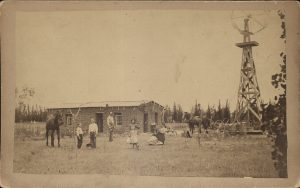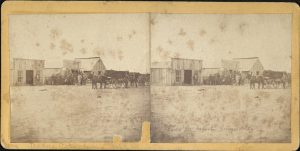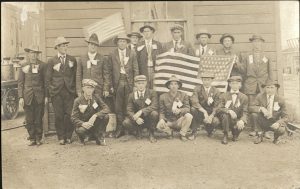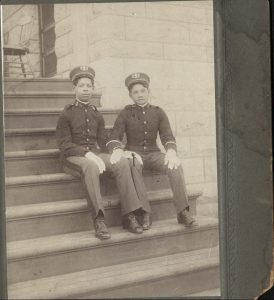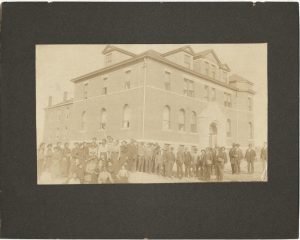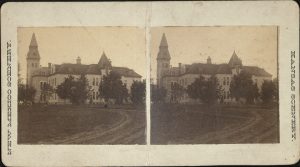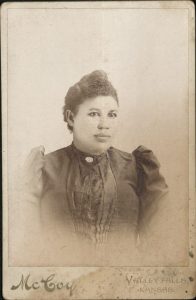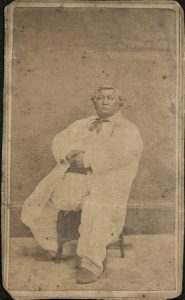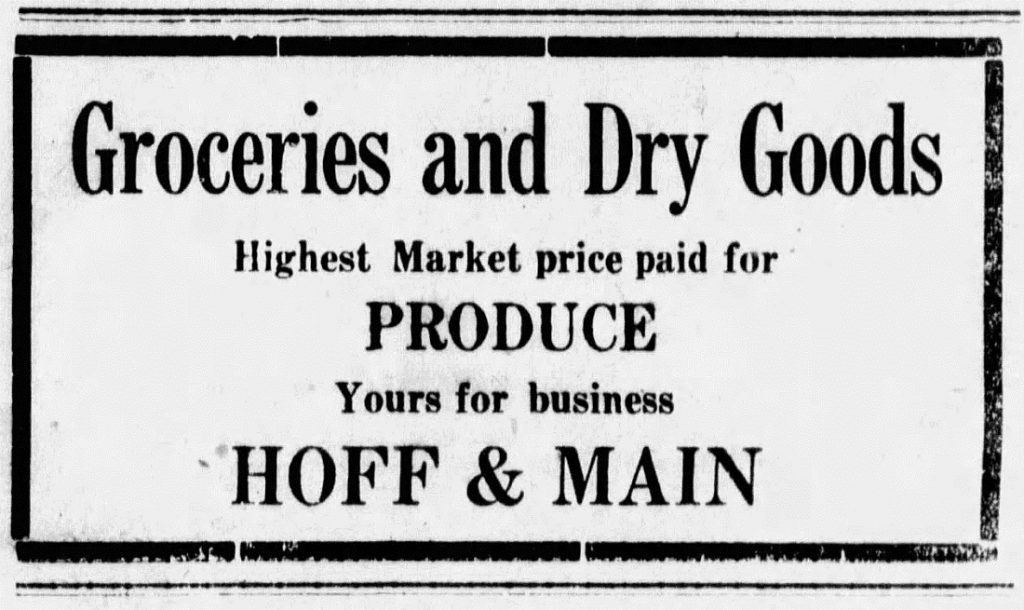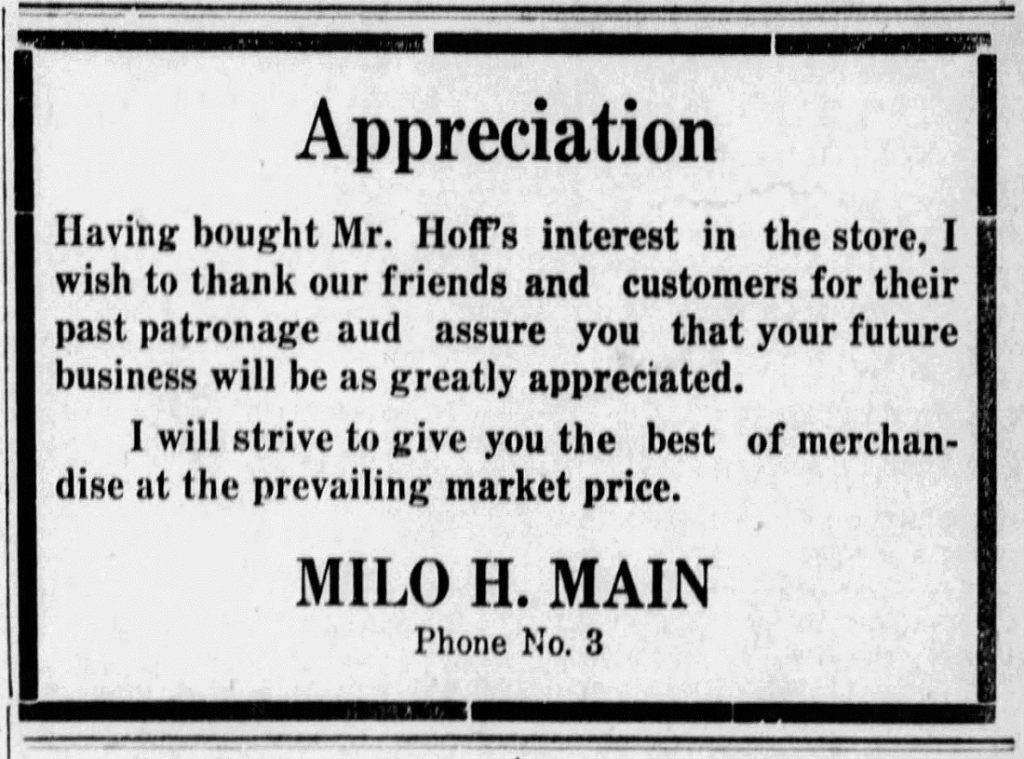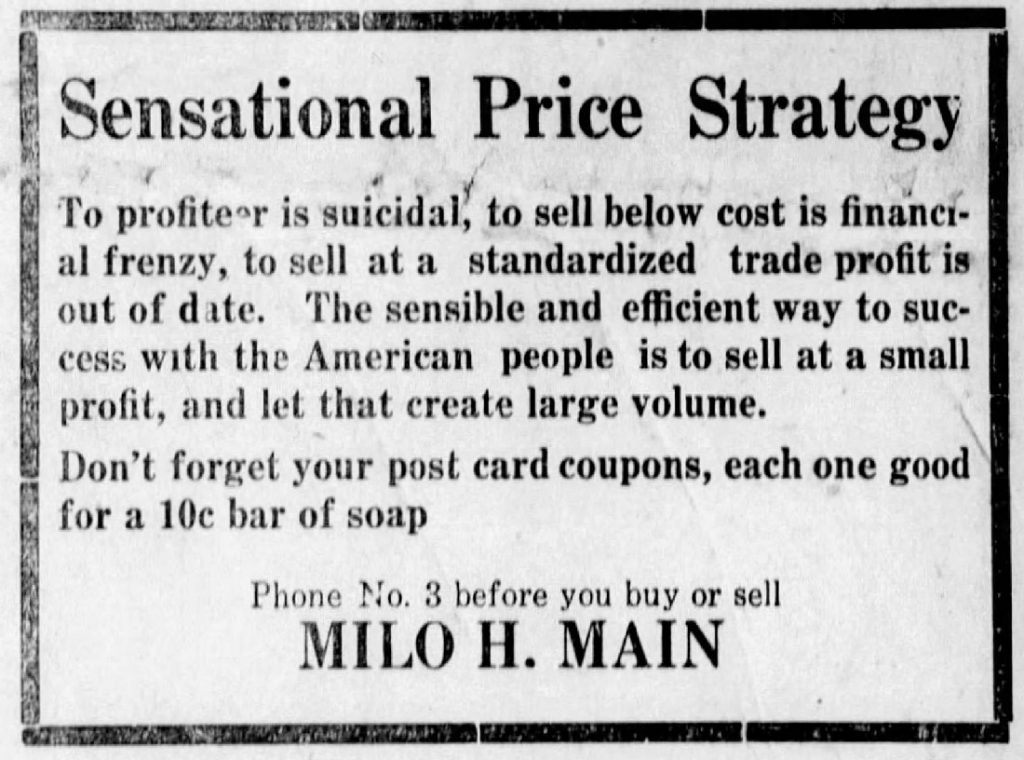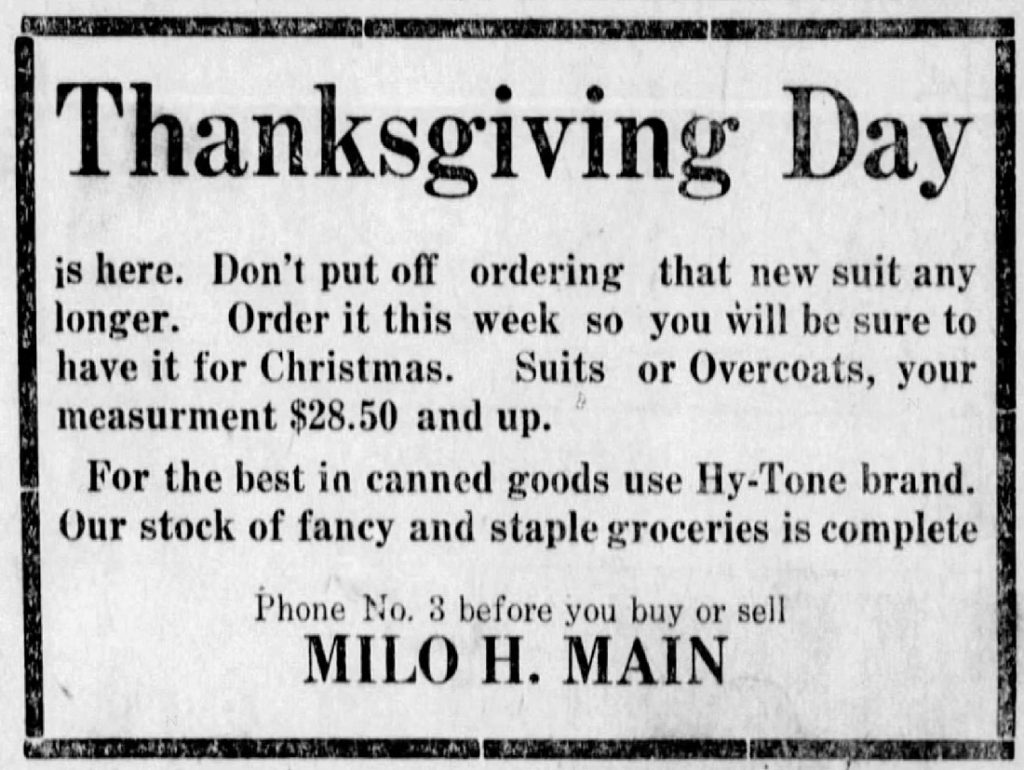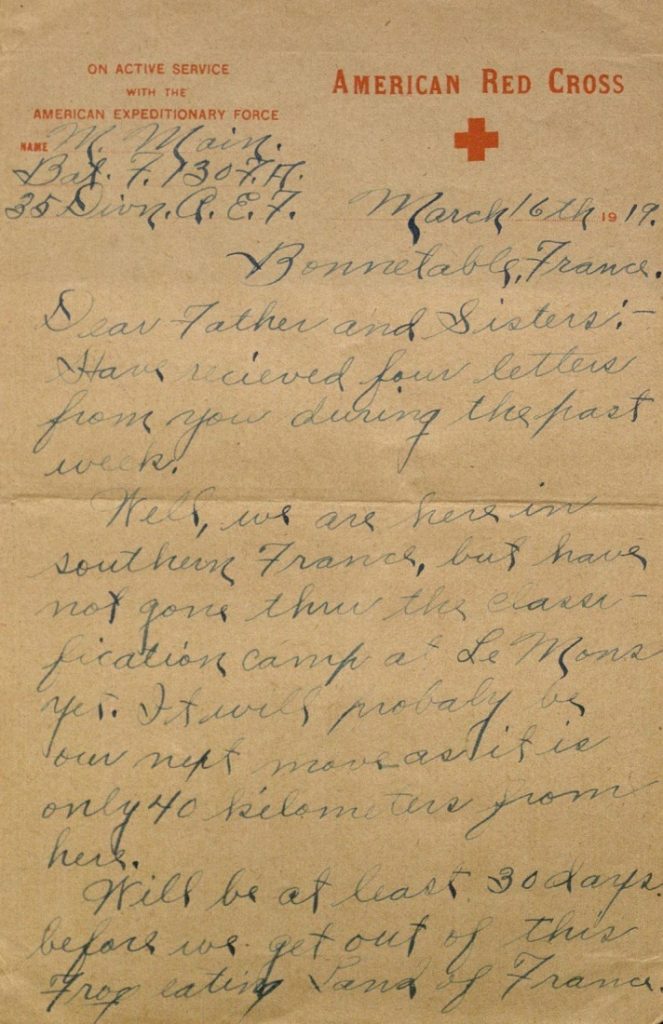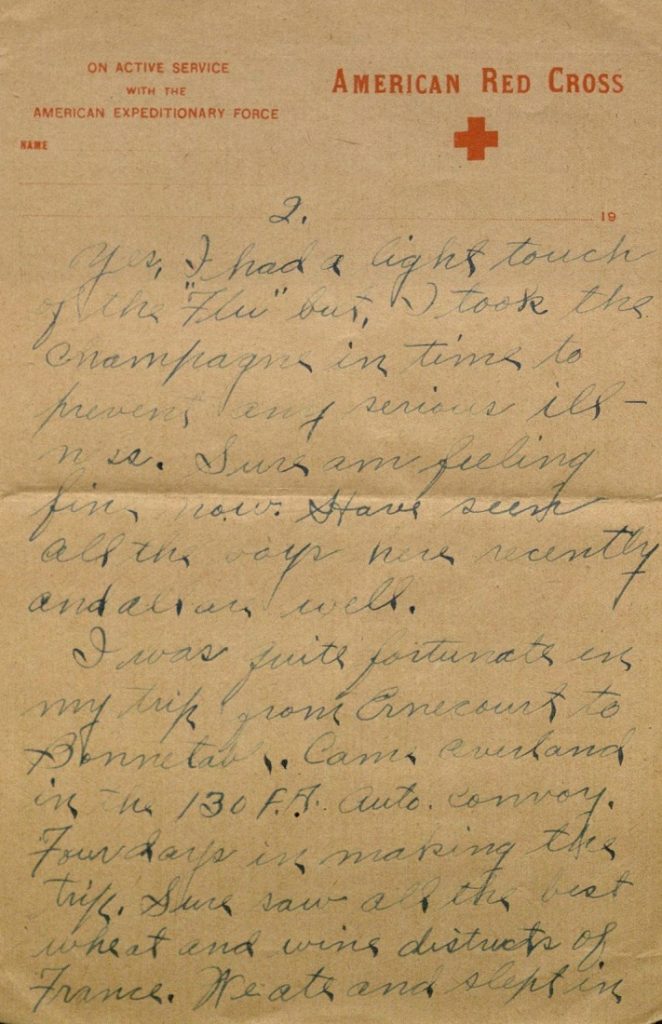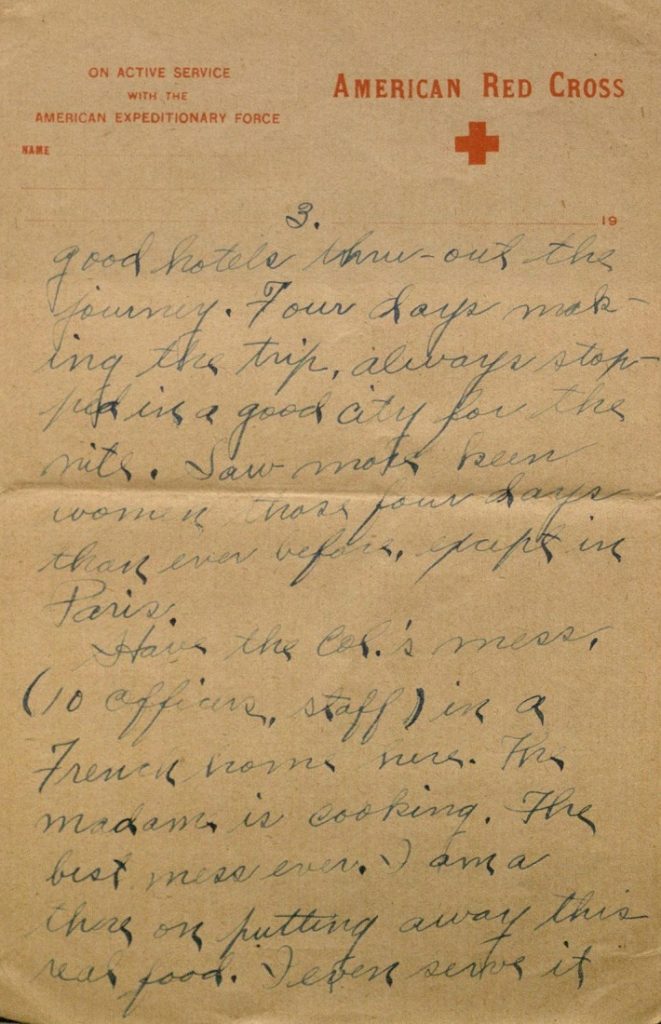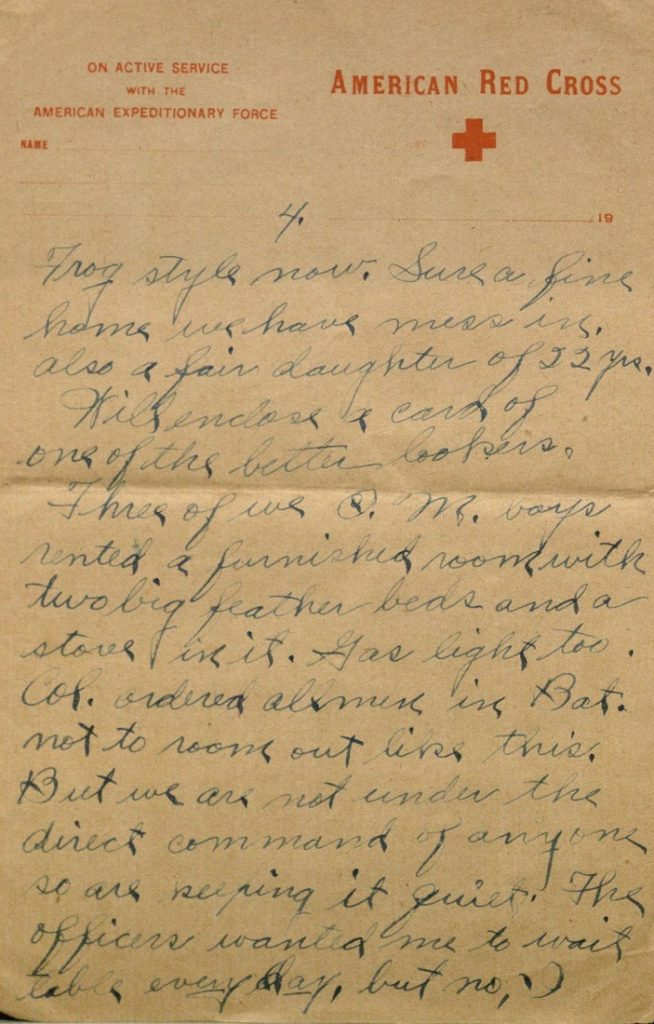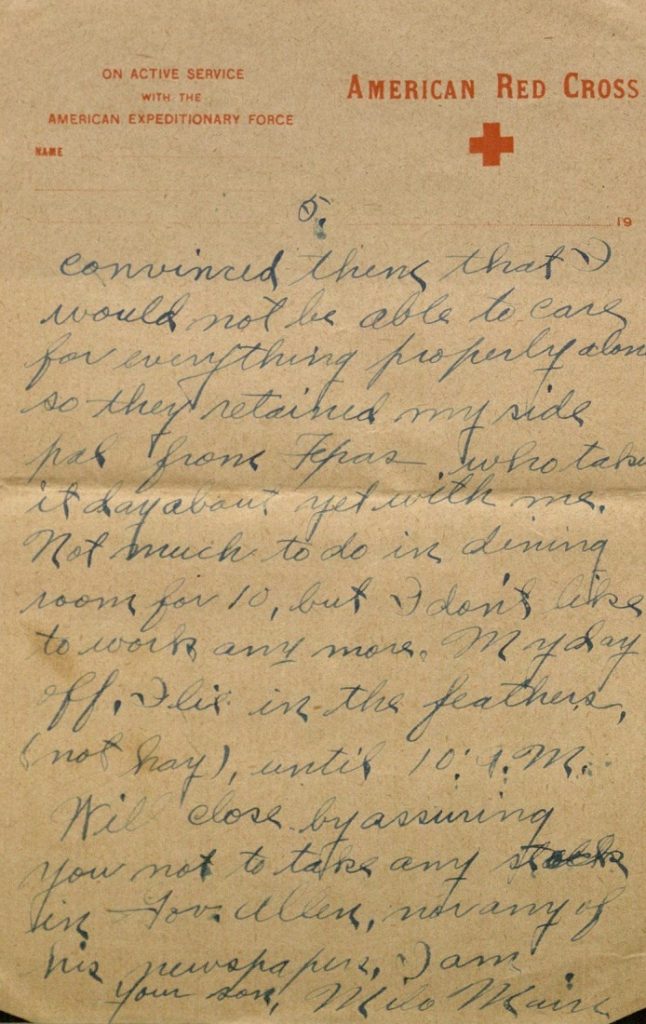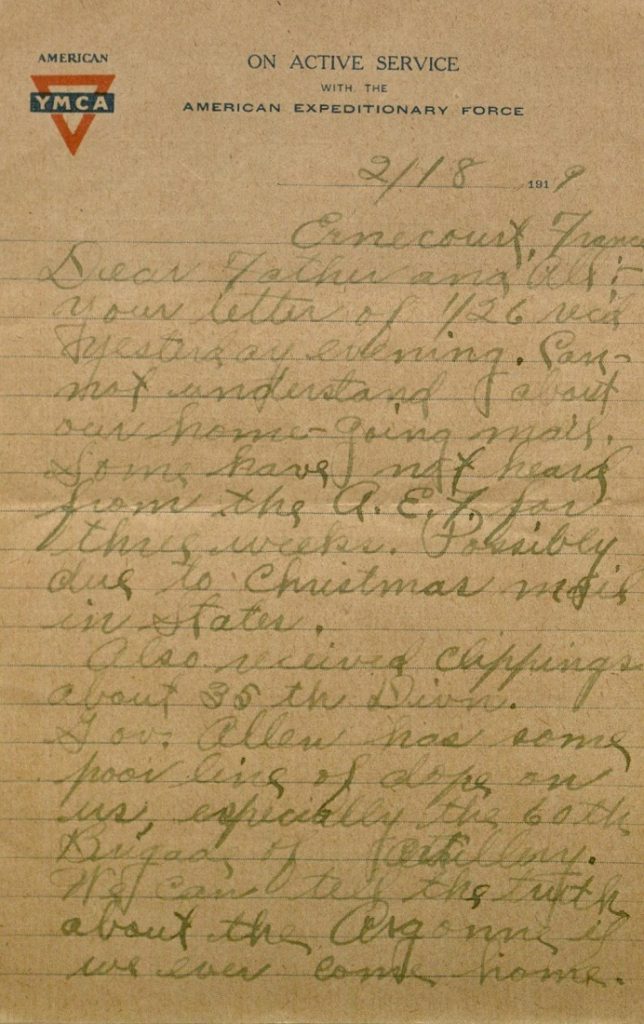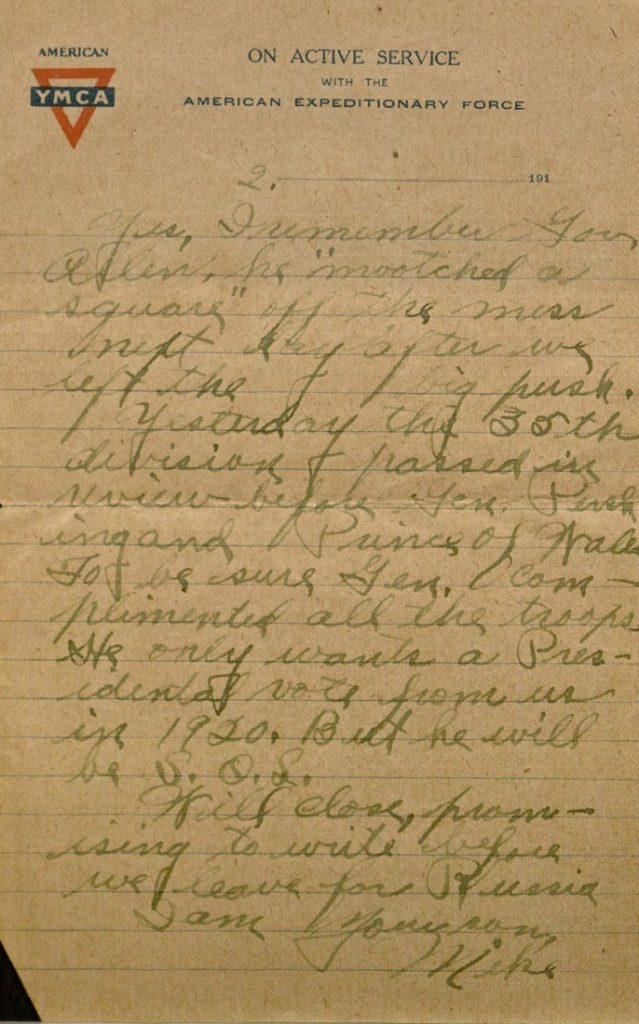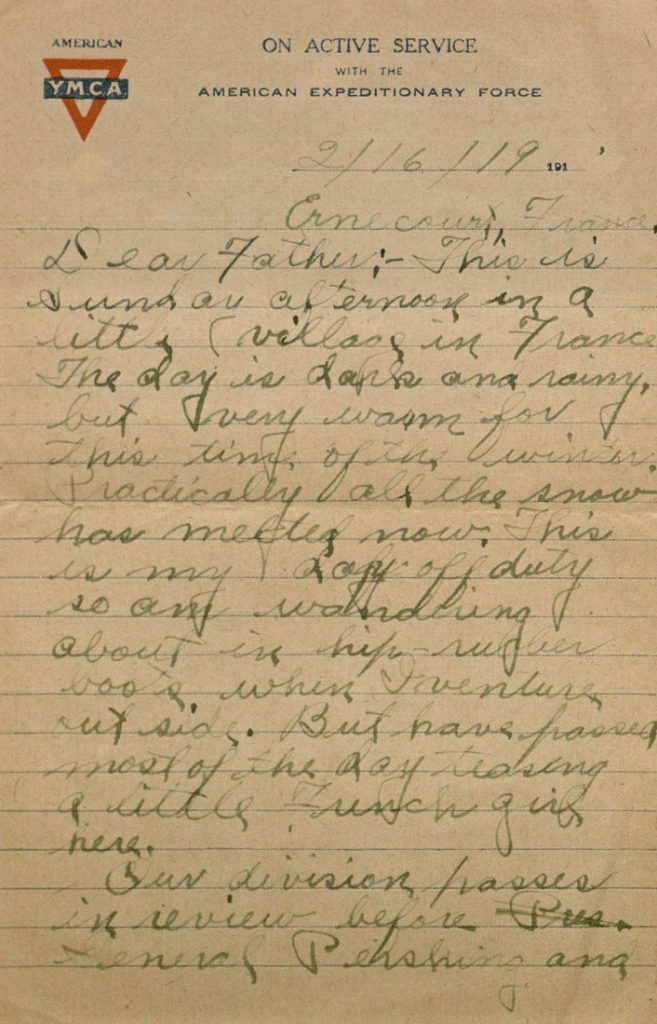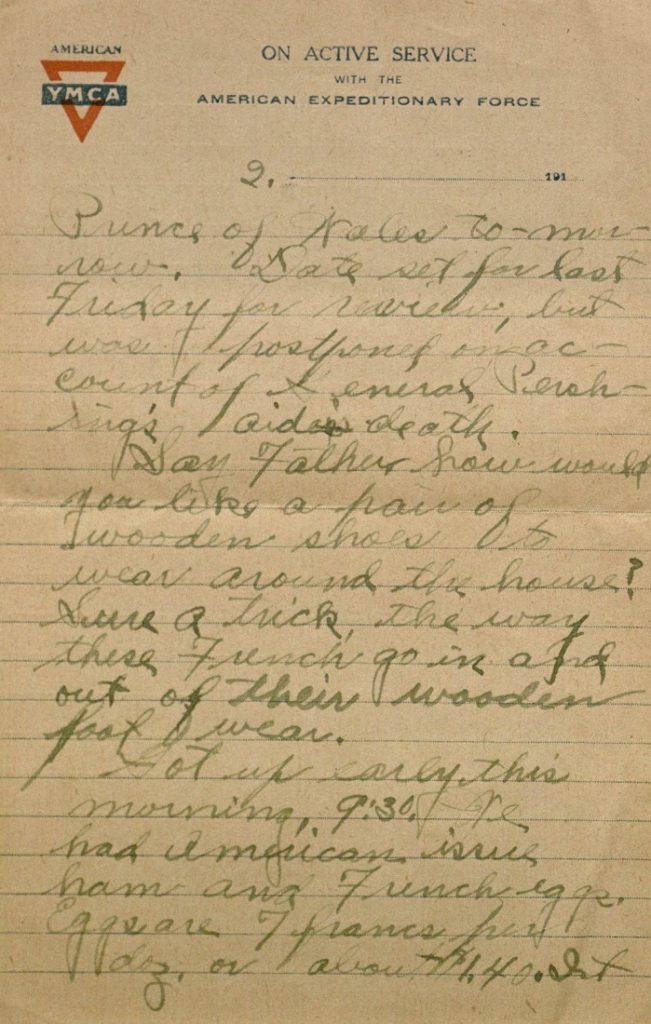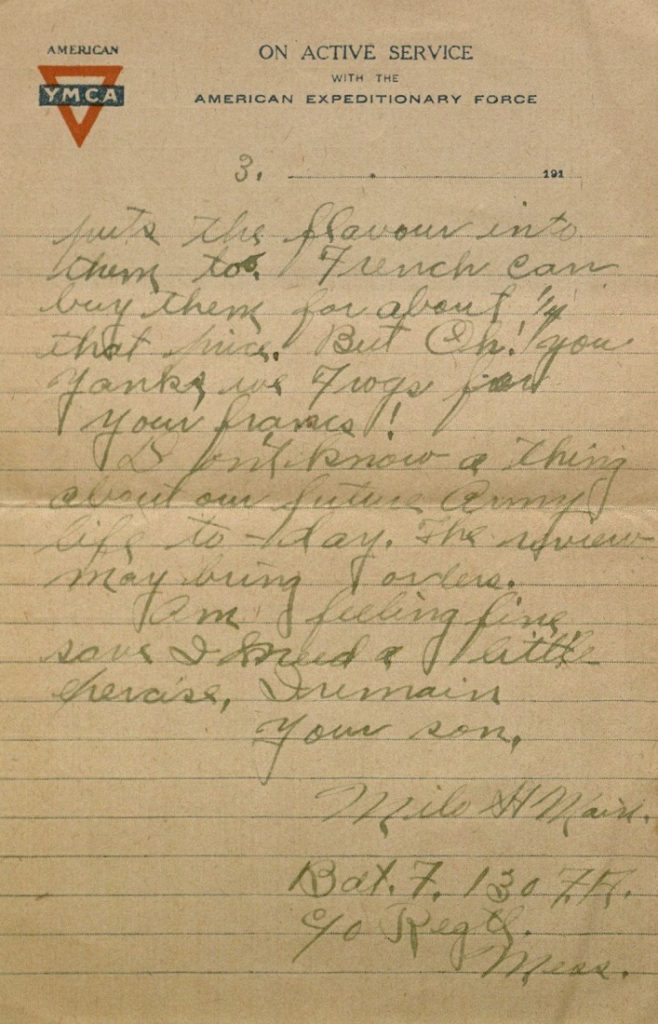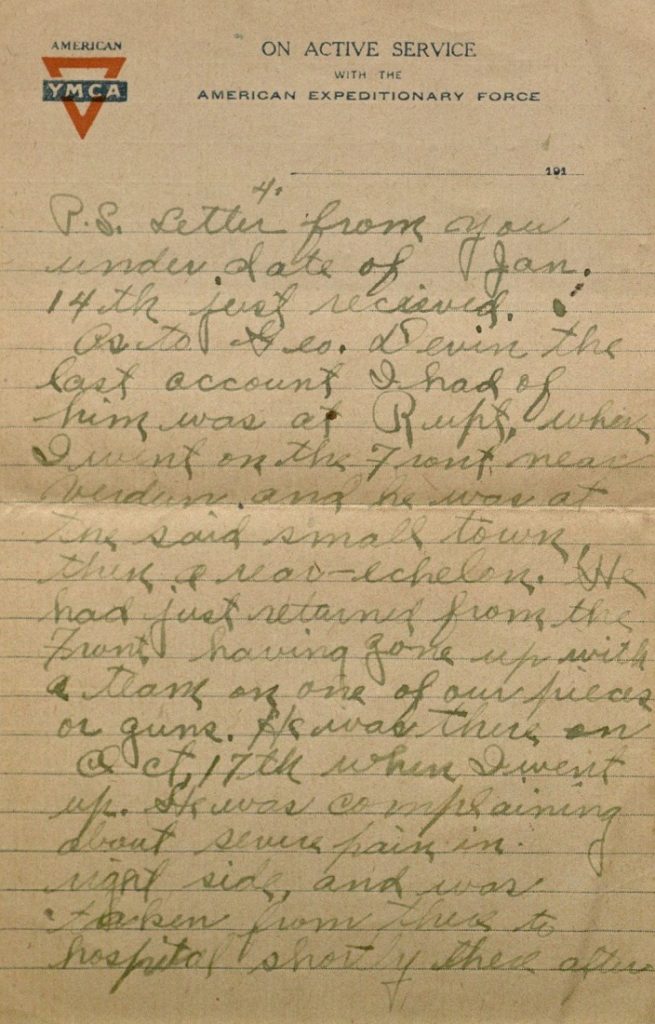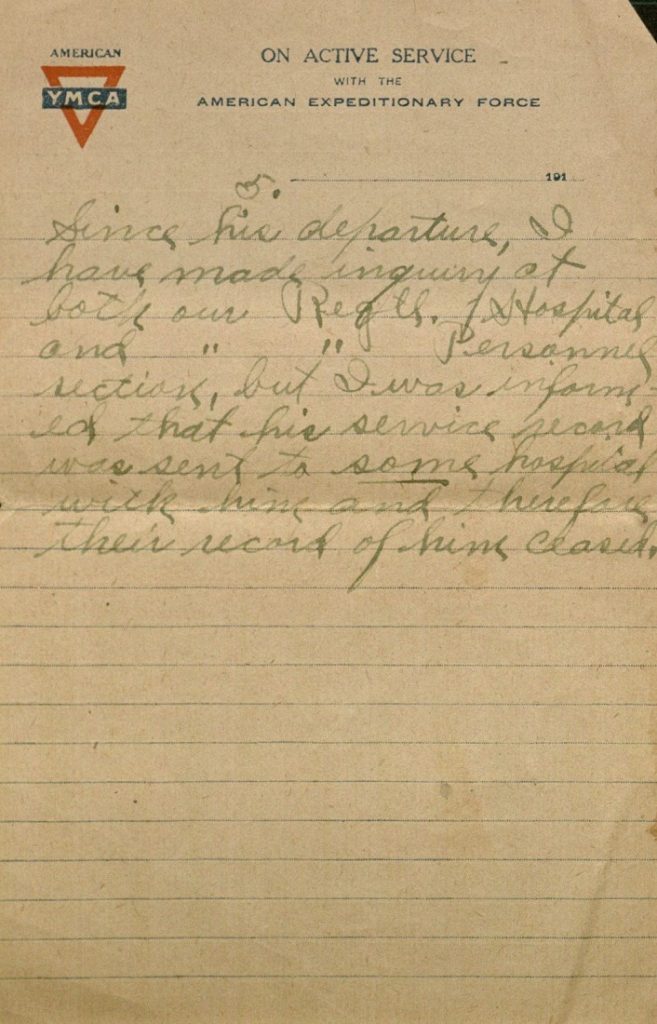Historic Kansas Photographs Recently Donated are the Subject of a Temporary Exhibit (Part Two)
August 7th, 2019This second installment of the temporary exhibit of the Hollmann photograph collection focuses on photographs of Kansas, featuring images depicting settlement, military service, portraits, and colleges. (The first installment highlighted photographs of Lawrence.)
Kansas settlement
Cabinet card of a sod home with family. Photographer B. I. March.
Call Number: RH PH 536, Box 41, Folder 8. Click image to enlarge.
M. Sheley and his family casually pose outside of their sod home with their horses near Norton. The date of the photograph is approximately 1900. In some areas of Kansas, lumber and trees to build houses were not available to early settlers. They built homes, barns, churches, and schools out of sod instead. Many images of sod structures appear in the Hollmann photograph collection.
Stereoview of Dodge City, Kansas. Published by J. Lee Knight of Topeka, Kansas.
Call Number: RH PH 536, Box 85, Folder 6. Click image to enlarge.
This stereoview shows an early view (1874?) of the settlement of Dodge City. Wagons or carts are piled high with an indiscernible cargo. An inscription on the right side of the card reads “Goods for export, Dodge City.”
Kansas military service
The Hollmann photograph collection contains many images of Kansans serving in the Civil War, Spanish-American War, World War I, and even World War II. Several hundred photographic postcards of Camp Funston illustrate life for Kansans training for World War I.
Postcard of Holyrood men before leaving for Camp Funston.
Call Number: RH PH 536, Box 15, Folder 34. Click image to enlarge.
This postcard, dated May 27, 1918, captures men in suits leaving their hometown of Holyrood in central Kansas for Camp Funston to serve in World War I. It appears that the photograph was taken near a railroad. The building behind them could be the train station.
Two members of the 9th Cavalry band. No photographer identified.
Call Number: RH PH 536, Box 28, Folder 22a. Click image to enlarge.
Dorcy Rhodes (left) and Sergeant Emilio Jarnilia of the 9th Cavalry band pose outside a building at Fort Riley. Their names are inscribed on the back of photograph. Although their service dates are not identified, the photograph dates from approximately the 1910s.
Kansas colleges
Besides the University of Kansas and Haskell Institute, featured in the previous post, many other Kansas colleges and universities are represented in the Hollmann photograph collection.
Stanley Hall at Western University caption: Western University for African Americans in Quindaro.
Call Number: RH PH 536, Box 44, Folder 16. Click image to enlarge.
Unidentified students stand in front of Stanley Hall at Western University in Quindaro in approximately 1906. The school was established after the Civil War and was the only African American school in Kansas. The university closed in 1943.
Stereoview of the Agricultural College, published by L. A. Ramsour in Manhattan.
Call Number: RH PH 536, Box 87, Folder 10. Click image to enlarge.
Shown here is the “Main building” of the Agricultural College, now known as Kansas State University, dated approximately 1880. The stereoview publisher, L.A. Ramsour, of Manhattan, Kansas, also published views of New Mexico, hence the publisher’s printing along the sides of the stereoview.
Kansas portraits
Unidentified woman, possibly from Valley Falls.
Photographer McCoy from Valley Falls, Kansas.
Call Number: RH PH 536, Box 48, Folder 4. Click image to enlarge.
Unfortunately, many of the portraits in the Hollmann photograph collection do not have identification. Often, a penciled inscription on the back of the photograph will identify the subject or give a clue as to the identity. This woman is not identified on the back, however since the portrait was taken in Valley Falls, it is possible that she is from there. Her clothing allows the photograph to be dated to approximately the 1880s.
Carte de visite of Pottawatomie Chief Abram Burnett of Topeka.
Photographers Bliss & Wentworth of Topeka. Dated approximately 1869.
Call Number: RH PH 536, Box 60, Folder 18. Click image to enlarge.
Pottawatomie Chief Abram Burnett was an important figure in Topeka history, moving to the area in the 1840s and serving as a mediator among the Pottawatomie tribe. He died in 1870 and was buried on his farm. His grave site is now known as Burnett’s Mound. A note inscribed on the back of the photograph states that the card was purchased as a souvenir in the 1860s.
Be sure to come view the temporary exhibit in the North Gallery in the Spencer Research Library before it closes at the end of August! The Spencer Research Library is open to everyone. If you would like to do research with the Hollmann photograph collection, please see our website for information on visiting and using the collection at Kenneth Spencer Research Library.
Lynn M. Ward
Processing Archivist

